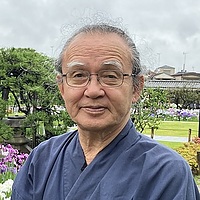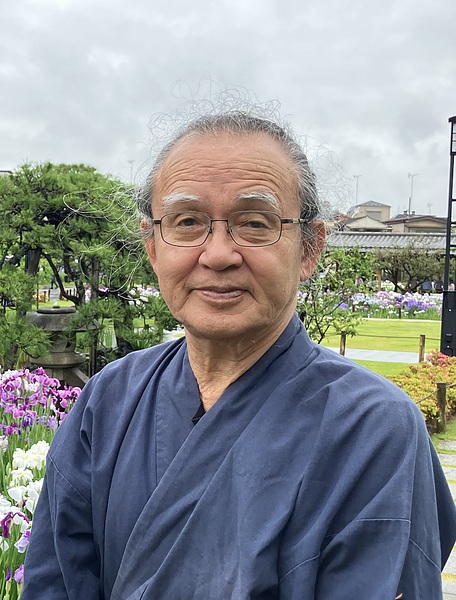英検1級道場-2024-1英検「2級」要約問題で合格点を取るための秘訣
マイベストプロのコラムの中で、下記の通り2024-1から導入された英検1級の要約問題に関して多方面から論じています
https://mbp-japan.com/chiba/eiken/column/5174244/ 2024/09/22
https://mbp-japan.com/chiba/eiken/column/5173855/ 2024/09/19
https://mbp-japan.com/chiba/eiken/column/5171522/ 2024/08/28
https://mbp-japan.com/chiba/eiken/column/5167986/ 2024/07/13
昨日、要約の採点に関して新たな情報が入ったので、2024-1の試験問題と英検が公開している「解答例」を比べながら、どのように書けばいいのかを検証してみました
ちなみに、2024-1は私自身が受験し、試験問題を持ち帰っています(54回目)
「解答例」は英検が試験の翌日、HPの速報で公開したものです
検証してわかったことは、一部のキーワード(固有名詞など)を除いて、要約の英文の大半が、本文の英語表現を書き換えたものだということです
表現は微妙に変えていますが、論旨が崩れないように正確に記述してあります
英検がこれを「解答例」として示しているのは、これが「模範解答」であると考えていいと思います
つまり、指示文に明記されているように、本文の趣旨を踏まえたうえで、本文とは違う英語表現で書くことを求められているようです
しかし、現実は、試験会場で、英検解答例のように立派な要約を本文とは異なる表現で書くことは至難の技です
英作文も同じことが言えます
英検が出している「解答例」は立派すぎて、あれだけの文章を試験会場で30分以内で書くのは不可能と言わざるを得ません
このことから考えると、要約も、「解答例」のレベルに至るのは至難の業であり、本文の論旨を正確に読み取り、要点をつかみ、それらをできるだけ自分の言い方で書いていくというのが現実の姿だと考えます
それでも難しい人は、本文のキーワードやキーセンテンスを拾い、接続詞を使って切り貼りするイメージで筆記するのが無難と言えるのではないでしょうか?
あと残るのは、採点者の匙加減です
・本文からキーワードとキーセンテンスを切り取り、つなぎ合わせただけだが、要約としては合っているので、許してくれる人もいるでしょう
・そうではなく、要約ポイントが正確でも、自分自身の表現で書いていない点を重視して、準1級では4/16点,1級では8/32点などをつける人もいるでしょう
ここが、「客観評価」の難しい点です
〇Xは良くないと言う人もいますが、こちらは採点者の価値観が入らないので「公平」であるという意見もあります
--------------------------
下記の例を参考にしてください
・Read the article below and summarize it in your own words as far as possible in English.
・Suggested length: 90-110 words
・Write your summary in the space provided on Side A of your answer sheet. Any writing outside the space will not be graded.
In the mid-1900s, around a third of the world's population lived in urban areas. By the 2010s, that proportion had risen to more than half, and it continues to grow. The city of Dhaka in Bangladesh had a population of around half a million in 1960, but this had risen to over twenty million by 2020. Similar increases can be seen in other major cities around the world. Experts point to several factors that are driving this rapid urban growth, and one of the biggest is the movement of people from rural areas to cities. Urban areas attract people seeking educational opportunities, jobs, and the chance to improve their lives.
下記が、英検が出している、この段落に相当する「要約」です
Urban populations worldwide continue to expand as people migrate from rural areas in search of better opportunities for wealth and social mobility.
This trend has led to severe problems in cities. Increased population density puts a strain on transportation systems and utility supply networks, which were often not designed to cope with such a swell in the number of people. Rising populations also create a shortage of housing and public facilities such as schools and hospitals. Although building additional housing and infrastructure seems like a practical response, such development is hindered by a lack of available land.
下記が、英検が出している、この段落に相当する「要約」です
As a result, cities are becoming increasingly overcrowded, which means insufficient land is available for residential and infrastructure development.
Some cities have found a way to overcome this issue. They have turned to a process known as land reclamation. This involves things like draining the water from a shallow area of the sea and then adding earth, sand, and rock to raise the level of the land. This has provided additional space to build on, but it has a drawback. The new land is created from a mixture of materials, and it is less solid than naturally formed land, so it has a tendency to sink over time. To address this, developers must take expensive steps to stabilize the land and prevent damage to the structures built on top of it.
下記が、英検が出している、この段落に相当する「要約」です
In response to this problem, many cities are employing land reclamation as a way to increase the amount of land that can be used for construction. Unfortunately, the disadvantage of land reclamation is that it is less sturdy than natural land, so costly preventative work is required to protect the buildings constructed on it.
95ワード
--------------------
参考に、本文のグーグル翻訳をつけておきます
1900 年代半ばには、世界人口の約 3 分の 1 が都市部に住んでいました。2010 年代までに、その割合は半分以上に上昇し、増加し続けています。バングラデシュのダッカ市の人口は 1960 年には約 50 万人でしたが、2020 年には 2,000 万人を超えました。同様の増加は、世界中の他の主要都市でも見られます。専門家は、この急速な都市成長を推進しているいくつかの要因を指摘していますが、その最大の要因の 1 つは、農村部から都市部への人々の移動です。都市部は、教育の機会、仕事、生活を向上させる機会を求める人々を引き付けます。
この傾向は、都市で深刻な問題を引き起こしています。人口密度の増加は、交通システムや公共供給ネットワークに負担をかけますが、これらは多くの場合、人口の急増に対応するように設計されていません。人口の増加により、住宅や学校や病院などの公共施設も不足します。住宅やインフラの追加建設は現実的な対応のように思えますが、利用可能な土地の不足により、そのような開発は妨げられています。
いくつかの都市は、この問題を克服する方法を見つけました。彼らは、干拓と呼ばれるプロセスに頼りました。これは、海の浅い部分から水を抜き、土、砂、岩を加えて土地の高さを上げるなどの作業を含みます。これにより、建設のためのスペースが増えましたが、欠点があります。新しい土地はさまざまな材料の混合物から作られ、自然に形成された土地よりも固くないため、時間の経過とともに沈む傾向があります。これに対処するために、開発者は土地を安定させ、その上に建てられた構造物の損傷を防ぐために、費用のかかる手順を踏まなければなりません












